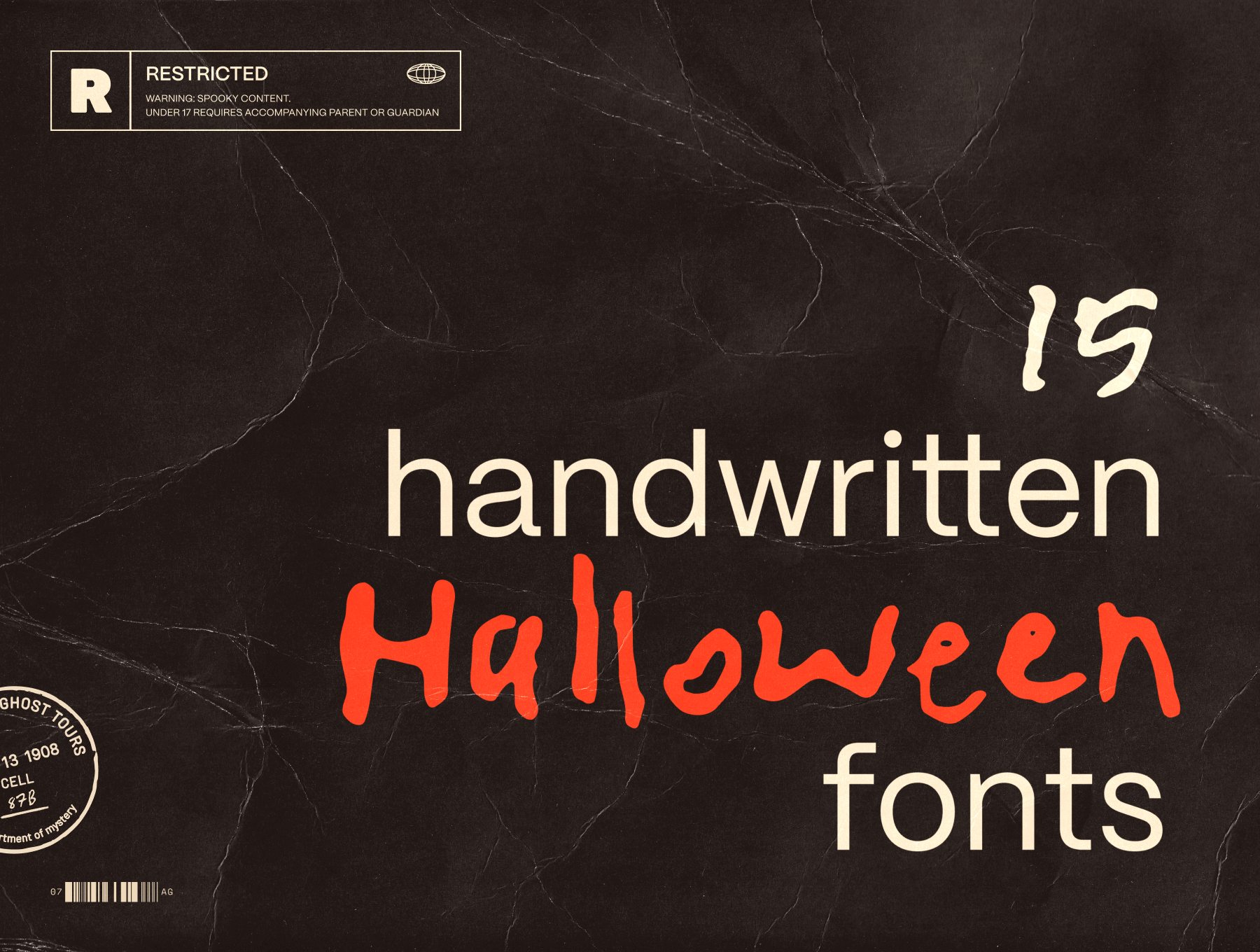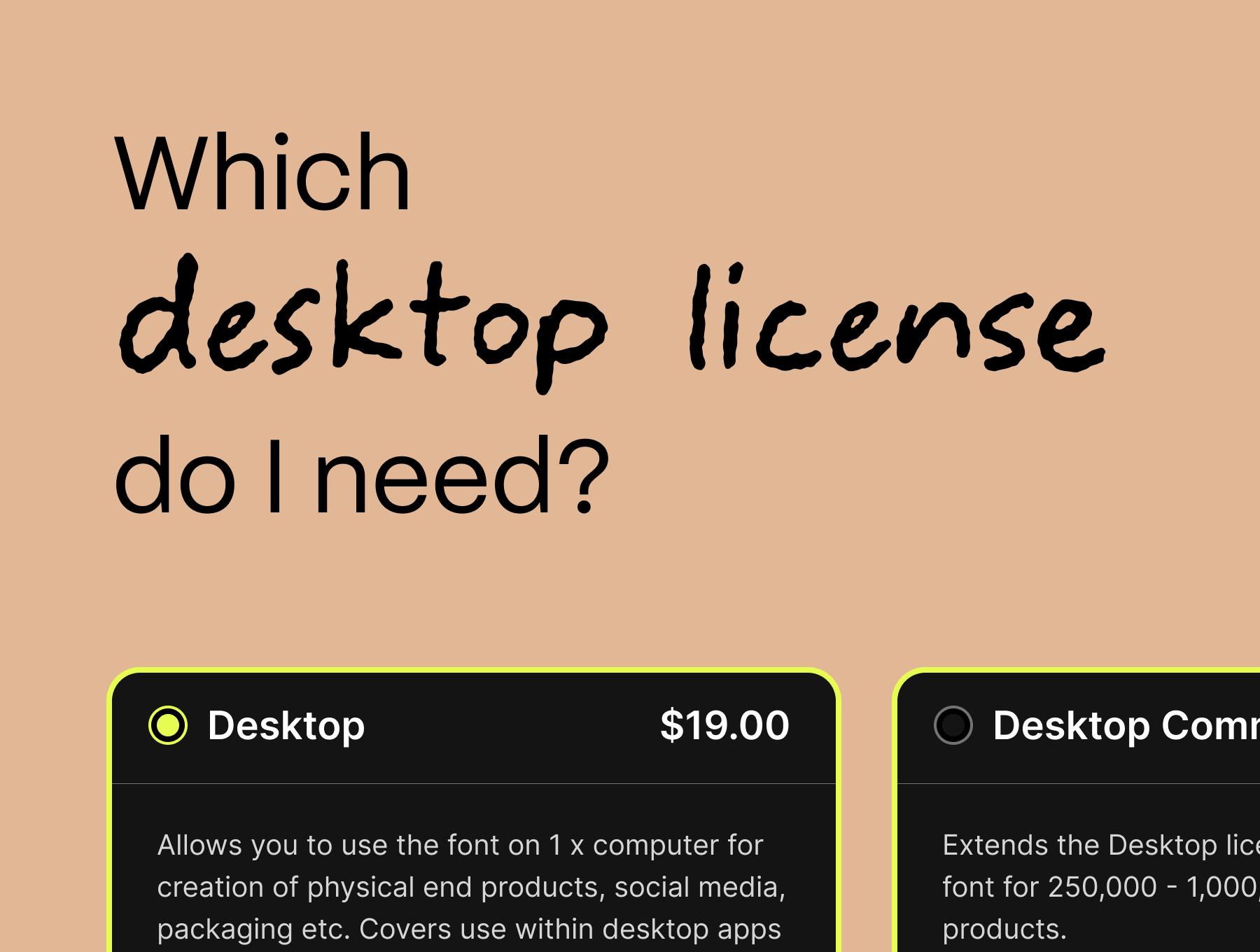Font licensing explained like a human
Font licensing is tricky and, if you’ve had the same experience as me, no one really teaches you how it works. I’m not going to lie; for a while I was just doing my best, guessing and hoping for the best (not ideal). Find out what I've learnt below.

As a freelancer, designer and employee I have waded through the ins and outs of font licensing over the years, and it’s certainly been a time. Coincidentally, I am now on the other end (as the licensor). As time and learnings went by, things became more clear and I gained a greater understanding of why font licensing is the way it is. In the essence of sharing information, I’ve put together a quick explanation of font licensing basics. I hope this helps.
What is a font license?
When you purchase a font, you’re not really buying the font itself; you are buying the right to use that font for the purpose(s) you require.
You might need to use the font for packaging, social media, an ebook, an album cover or even uploading the font to a server for multiple people to access.
This gives more meaning as to why font licenses range so much in price; would you expect the owner of a small restaurant business using the typeface for headings on their menus to pay the same amount as a multi-million dollar corporation using the typeface across their entire branding suite, viewed by millions of people?
The way the licensing is handled is different for every foundry / marketplace and you will need to check exactly what you are licensed for when you are purchasing.
What is each type of license for?
For desktop licenses, you typically purchase per user / machine. E.g. if you have 5 designers and they all need to use the font on their own computers, this would require 5 licenses. Some foundries offer discounts for multiple licenses.
When licensing web fonts, it tends to be a little more varied. Webfonts are licensed by website pageviews per month (or year in some cases). The range for the number of views differs between foundries and marketplaces and this is something you can select during checkout.
ePub licenses are generally purchased for a single publication (e.g. one eBook title). If you have multiple books in one series, you would need to check the specific terms of the foundry you are purchasing from. Some may allow books within a series to utilise the same font license, others may require a license per ‘instalment’ (e.g. ‘The Fellowship of the Ring’ and ‘The Two Towers’).
Application (or app) licenses typically cover desktop and mobile apps (such as games). The fonts used should be rasterised and not extractable.
Trial or demo licenses are offered by foundries to allow their customers to essentially ‘try before you buy’. Demo licenses are often limited in their character set. For example, they may only include A-Z and 0-9 along with some basic symbols. This is so potential customers can get an idea of how the font will look in its live environment, without giving the full font away for free 😎
Some demo fonts are licensed as ‘free for personal use’. This means you can use the demo font for personal projects such as university assignments, personal crafts or anything that isn’t intended for business or profit. ‘Personal use’ typically does not include charity, so check this with the foundry you are purchasing from.
Recently, there has been an uptake in foundries offering subscriptions (i.e. you pay year on year or month on month for as long as you are using the font). This method comes with pros and cons. With a subscription, you usually get access to a large number of fonts in the subscription library, and licensing and use is often quite flexible. However, this also means that you will need to be paying for the subscription to keep using the font. This is something to keep in mind if you have 50 fonts currently all licensed and utilised and you then want to cancel your subscription… You may then have to re-purchase all the fonts at their full price to be licensed legally.
A custom font license is an agreement made between you and a font foundry. The custom license agreement should outline the font(s) that are to be licensed, the allowed use, the length of the use, the price of the license and anything else that is necessary to mention as part of the agreement. A custom license agreement is often required when the use of the font sits outside the standard licensing terms (such as high volume or enterprise use). Both parties agree on the terms and conditions, sign the agreement and everyone (ideally) lives happily ever after.
I hope this has helped clear the waters a little. I'll add to this page if I come across anything useful that needs to be shared.
All the best and happy fonting,
Laura
Keep reading
View all articles →15 messy handwritten Halloween fonts
From jittery brush strokes to scratchy marker lines, we’ve curated 15 of our favourite spooky, messy and hand-crafted fonts to inspire your Halloween designs.
Read on →Which Desktop Font License Do I Need?
Not sure which desktop font license is right for you? Learn how to choose the correct license.
Read on →



